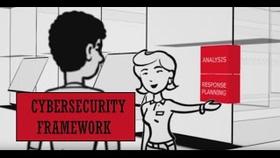This page is no longer being updated and the information may be out of date.
Information Technology Laboratory Videos
Created through collaboration between industry, academia and government, the voluntary NIST Cybersecurity Framework helps organizations manage their cybersecurity-related risks.
The prioritized, flexible, repeatable, and cost-effective approach of the NIST Cybersecurity Framework helps owners and operators of critical infrastructure manage cybersecurity-related risks.
Can a close look at the universe give us solutions to problems too difficult for a computer to solve? In this video, NIST physicist Stephen Jordan reflects on this question.
Ever get tired of having to update your username and password? In this video, NIST scientist Mary Theofanos explains how users are bogged down by too many decisions involving their online security.
The world’s foremost mathematics handbook for nearly 50 years and the most cited publication in the history of NIST now has a fresh look, updated data, and a new digital companion.
For many of us, creating passwords forces us to balance the need for security with the desire for something we can remember. Here are user-friendly, lay-language tips for password creation.
Donna Dodson, Associate Director and Chief Cybersecurity Advisor in NIST’s Information Technology Laboratory, and Vint Cerf, Chief Internet Evangelist for Google, talk about the Internet, network security, and the Internet of Things.
Industry leaders discuss cybersecurity concerns around the Internet of Things and the role NIST can play to help secure our future.
Featuring thought leaders from:
G2 Inc., Global Cyber Alliance, Symantec, Cisco, Cylance Inc., Tufts University, Cloud Security Alliance, Twistlock
Featuring thought leaders from:
G2 Inc., Global Cyber Alliance, Symantec, Cisco, Cylance Inc., Tufts University, Cloud Security Alliance, Twistlock
Organizations worldwide stand to lose an estimated $9 billion in 2018 to employees clicking on phishing emails. We hear about new phishing attacks regularly from the news and from our friends. So why DO so many people still click? NIST research has uncovered one reason, and the findings could help CIOs mount a better defense.
Created January 2, 2018, Updated August 13, 2025



